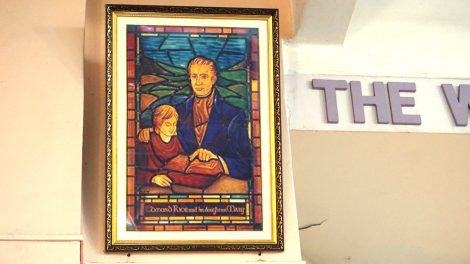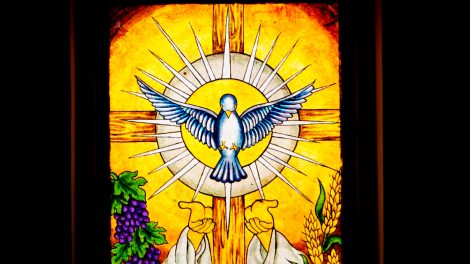 Edmund Ignatius Rice, (1 June 1762 – 29 August 1844), was a Catholic missionary and educationalist. He was the founder of two religious institutes of religious brothers: the Congregation of Christian Brothers and the Presentation Brothers.
Edmund Ignatius Rice, (1 June 1762 – 29 August 1844), was a Catholic missionary and educationalist. He was the founder of two religious institutes of religious brothers: the Congregation of Christian Brothers and the Presentation Brothers.
Rice was born in Ireland at a time when Catholics faced oppression under Penal Laws enforced by the British authorities, though reforms began in 1778 when he was a teenager. He forged a successful career in business and, after an accident which killed his wife and left his daughter disabled and with learning difficulties, thereafter devoted his life to education of the poor.
Christian Brothers and Presentation Brothers schools around the world continue to follow the traditions established by Edmund Rice.
Edmund Rice was born to Robert Rice and Margaret Rice (née Tierney) on the farming property of “Westcourt”, in Callan, County Kilkenny. Edmund Rice was the fourth of seven sons, although he also had two step sisters, Joan and Jane Murphy, the offspring of his mother’s first marriage.
Rice’s education, like that of every other Irish Catholic of the day, was greatly compromised by the 1709 amendment to the Popery Act, which decreed that any public or private instruction in the Catholic faith would render teachers liable to prosecution, a measure that was not reformed until 1782. In this environment, hedge schools proliferated.
 The boys of the Rice family obtained an education at home through Patrick Grace, a member of the small community of Augustinian friars in Callan. As a young man, Rice spent two years at a school which, despite the provisions of the penal laws, the authorities suffered to exist in the City of Kilkenny.
The boys of the Rice family obtained an education at home through Patrick Grace, a member of the small community of Augustinian friars in Callan. As a young man, Rice spent two years at a school which, despite the provisions of the penal laws, the authorities suffered to exist in the City of Kilkenny.
His uncle Michael owned a merchant business in the nearby port town of Waterford. In 1779 Edmund was apprenticed to him, moving into a house in the market parish of Ballybricken, entering the business of trading livestock and other supplies, and the supervising of loading of victuals onto ships bound for the British colonies. Michael Rice died in 1785, and this business passed to Edmund. He was an active member of a society established in the city for the relief of the poor.[3] His favourite charity was the Sick and Indigent Roomkeepers’ Association whose members visited the sick poor in their homes.
In about 1785 he married a young woman (perhaps Mary Elliott, the daughter of a Waterford tanner). Little is known about their married life, and Mary died in January 1789 following an accident, possibly by a fever that set in afterwards. The circumstances surrounding this accident are unclear, but she may have fallen off a horse that she was riding, or thrown out of a carriage by panicking horses. Pregnant at the time, a daughter was born on Mary’s deathbed. The daughter (also named Mary) was born handicapped. Edmund Rice was left a widower, with an infant daughter in delicate health.
Following his wife’s death, he began discerning a vocation to join a monastery, perhaps in France. One day, while discussing his vocation with the sister of Thomas Hussey, the Bishop of Waterford, a band of ragged boys passed by. She pointed to them, and cried:” What! Would you bury yourself in a cell on the continent rather than devote your wealth and your life to the spiritual and material interest of these poor youths?”
 After settling his business affairs in 1802, Rice devoted his life to prayer and charitable work, particularly with the poor and marginalised of Waterford. In 1802, when he established a makeshift school in a converted stable in New Street, Waterford, he found the children were so difficult to manage that the teachers resigned. This prompted him to sell his thriving business to another prominent Catholic merchant, a Mr. Quan, and devote himself to training teachers who would dedicate their lives to prayers and to teaching the children free of charge. Despite the difficulties involved, Edmund’s classes were so popular that another temporary school had to be set up on another of his properties, this time in nearby Stephen Street.
After settling his business affairs in 1802, Rice devoted his life to prayer and charitable work, particularly with the poor and marginalised of Waterford. In 1802, when he established a makeshift school in a converted stable in New Street, Waterford, he found the children were so difficult to manage that the teachers resigned. This prompted him to sell his thriving business to another prominent Catholic merchant, a Mr. Quan, and devote himself to training teachers who would dedicate their lives to prayers and to teaching the children free of charge. Despite the difficulties involved, Edmund’s classes were so popular that another temporary school had to be set up on another of his properties, this time in nearby Stephen Street.
The turning point of Rice’s ministry was the arrival of two young men, Thomas Grosvenor and Patrick Finn, from his hometown of Callan. They came to him with the desire of joining a congregation, but had not decided which they would join. As it turned out, they remained to teach at Edmund Rice’s school, and formed their own. The subsequent success of the New Street school led to a more permanent building, named “Mount Sion”, where construction began on 1 June 1802. The Mount Sion monastery was officially blessed by Bishop Thomas Hussey on 7 June 1803. Since the schoolhouse was not yet completed, Rice, Finn, and Grosvenor took up residence but walked each day from Mt Sion to their schools on New Street and Stephen Street. On 1 May 1804, the adjoining school was opened and blessed by Hussey’s successor, Bishop John Power, and their pupils transferred to the new building.
A request made to the local Church of Ireland bishop for a school licence was eventually granted, thanks to the appeals of some of Rice’s more influential friends. By 1806 Christian schools were established in Waterford, Carrick-on-Suir, and Dungarvan.
The Christian Brothers
The Congregation of Christian Brothers (officially, in Latin: Congregatio Fratrum Christianorum; members of the order use the post-nominal “CFC”) is a worldwide religious community within the Catholic Church, founded by Edmund Rice (later beatified).
The Christian Brothers, as they are commonly known, chiefly work for the evangelisation and education of youth, but are involved in many ministries, especially with the poor. Their first school was opened in Waterford, Ireland, in 1802.
This congregation is sometimes called the Irish Christian Brothers or the Edmund Rice Christian Brothers.
The congregation of Irish Christian Brothers spread to Liverpool and other parts of England. These new ventures were not always immediately successful. Two brothers had been sent to Gibraltar to establish an institute in 1835. However, despite initial successes they left in August 1837 on account of disagreements with the local priests.The school eventually flourished supplying education to the twentieth century. The “Line Wall College” was noted in 1930 for the education that it supplied to “well to do” children.
Brother Ambrose Treacy established a presence in Melbourne, Australia in 1868, in 1875 in Brisbane, Australia and in 1876 a school was commenced in Dunedin, New Zealand. In 1875 a school was opened in St. John’s, Newfoundland.
In 1886 the Pope requested that they consider setting up in India, and a province of the congregation was established there.
In 1900 came the invitation to establish houses in Rome, and in 1906 schools were established in New York City.
In 1940 Iona College was founded in New York, as a Higher Education College, facilitating poorer high school graduates to progress to a College education.
In 1955 Stella Maris College (Montevideo) in Uruguay was established.
In 1967, the Christian Brothers had a membership of about 5,000, teaching in around 600 schools.
The Christian Brothers teacher training center has become the Marino Institute for Education which has trained lay teachers since 1972 and has offered degrees validated by the University of Dublin since 1974.
In 2012 Trinity College Dublin became a co-trustee with the Brothers of the Institute.[10]
The Brothers’ schools include primary, secondary and technical schools, orphanages and schools for the deaf. A number of these technical schools originally taught poor children trades such as carpentry and building skills for which they could progress to gain apprenticeships and employment.